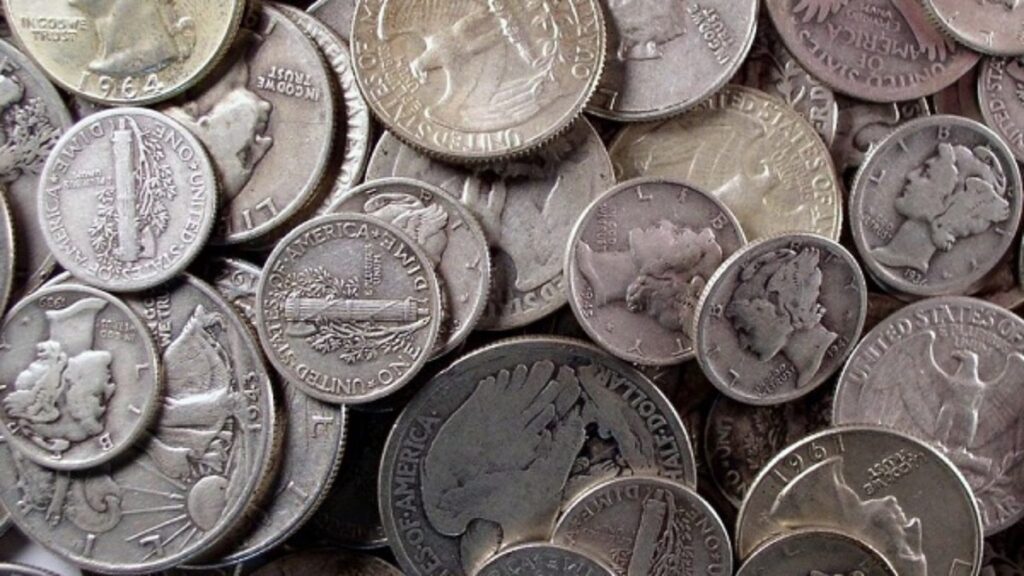
If you have built up a valuable supply of gold, guns, precious metals, and general preps, you do not want to lose them in a home burglary. According to the FBI, in 2017 there were an estimated 1,401,840 burglaries. Residential properties accounted for 67.2% of those crimes. So, the likelihood of being the victim of a home burglary is abnormally high when compared to other crimes. Worse, many of these crimes go unsolved. This means your stolen valuables will likely not come back to you.
Not all items we have at home are worth keeping (or hiding). But with other things like cash, jewelry, and preps, you should not take any risks. For precious metals like gold and silver, preppers are known for wanting to have these stored in places they can access (as opposed to a gold fund, for example). After all, if the grid goes down and you need junk silver for bartering, it will not do you any good if you cannot get to that silver. You have to find a way to both keep it within access but hidden from thieves.
Items You Want to Hide in Your Home
There are many items you can keep from prying eyes and nosy visitors, and it all depends on what you consider as precious or valuable in the first place. Here are the things you may want to keep in a safe spot:
- precious coins,
- jewelry,
- stamp or coin collection,
- money,
- incriminating or confidential documents,
- foreign currency,
- firearms,
- external “wallet” for your Bitcoin information,
- family heirlooms, and
- gold or other precious metals.
Think Like a Thief

You must think like a thief to know where the safest hiding spots are. It is not enough to slow a burglar at the door. If you are not home to defend your property, they will get in. The question then is – will they find your stuff? Remember, a thief has two motivations:
- Steal your money and valuables.
- Get out of the house as quickly as possible.
Considering those two things, you may want to hide your goods in spots that would take more time for burglars or thieves to find or access. A good thief is not stupid, and even the not-so-smart ones know where to look first, the master bedroom. In particular, bedroom dressers and closets. This is where most people hide valuables. We all know this. Many of us do the same.
That said, if you have valuables that you want to hide long-term, it is smart to invest in a good safe. While it may draw more attention to itself for obvious reasons, it is still more secure than obscurity. In addition, they are often fireproof or fire resistant. If you invest in a quality safe, there is a slim chance that burglars would get into it, especially if you bolt it down. Thieves are interested in getting in and out.
Following are some ideas on where you can hide your valuables within your home or on your property. This keeps your items safe from burglars but also accessible should you need to access them. These are 40 suggestions of places where most thieves would never think to look, organized by the size of the items.
Where to Hide Small Valuables
Smaller valuables are, naturally, the easiest to hide. They can be hidden almost anywhere, but these are some of the safest spots around your home. For extra security, you can use a multitude of these strategies. Put 20% of your silver in one spot, 20% in another, etc. That way you will not lose everything at once should something happen to one of your hiding locations.
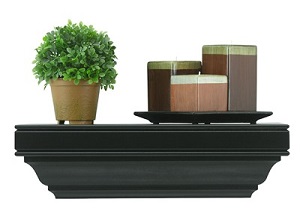
1. Behind the picture inside a picture frame. Intruders may rush to look behind the picture frame, where many people place in-the-wall safes, but they will never actually open the actual picture frame itself. Just make sure you are not using the frame in a valuable piece of art, or you might lose the art and whatever is in the frame.
2. Buried in the “soil” of a fake plant. You can, of course, hide items in a real plant, but that is soil that needs to be watered, so plan accordingly.
3. Anywhere in a kid’s room – preferably inside a toy. Thieves do not look for important items in the children’s rooms given the fact that kids can have tons of toys and other stuff in their pile of mess. Downside? Your kid might lose the toy.
4. Inside a pill bottle. You can either hide it in a small empty one or a big one with the pills still inside. This works for any container – a coffee can, old soup can, or anything you have at home. Just make sure it is a boring bottle, like Vitamin C supplements. Many thieves will search a bathroom looking for prescription drugs!
5. In-between the pages of a book. Again, the idea is to make your stuff as inconspicuous as it can get. This works only if you have a lot of books or an entire cabinet full of books as intruders are not likely to pore through each book on your shelf. It is limited to thin paper items – like cash.
6. Inside a box of detergent or laundry soap. You can put away some of your valuables at the bottom of a soapbox and leave it sitting in the laundry room. This is one of the last places a burglar would bother to check if they are in a hurry.
7. Heels of shoes. Another inconspicuous spot you can hide your valuables would be in the heels of your shoes, hollowed out from the inside. The best part of this is you can use this method to hide money or jewelry while traveling. It is much safer than a money belt, which virtually all thugs know to check.
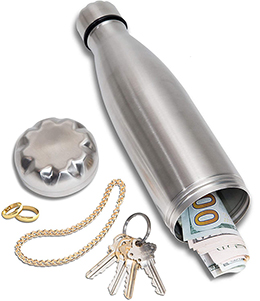
8. Canned goods. This one will require more skill than the others. Start by peeling off the label carefully and then pierce a small hole in the middle of the seam. Using a mini-torch, apply heat to the seam until the solder runs, absorbing it with a solder wick. Pull the tin apart carefully with a screwdriver. Then, with tin snips, make two small openings at the top and bottom of the outside edge. Put in the stash, reseal the edges, and re-solder the seam. Clean up the rough edges with auto body repair filler and replace the label. Alternatively, buy a bottle with a false bottom.
9. Vaseline or cold cream container. Scoop two-thirds of the content out of the bottle or container. Put in the stash sealed in a zip lock bag, then melt the scooped-out content before pouring it back in the container. It is a bit of work, but great for longer-term storage.
10. Fake drainpipe. Construct a fake drainpipe in the basement using black PVC from floor to ceiling. This could make for an excellent hiding location for many items, as this can also be made to be waterproof—place items into the tube in a series of zip lock bags.
11. Bicycle pump. Take out the piston assembly from the inside, adjust the rod, and place the stash inside.
12. Cinder blocks. One good thing you may not know about cinder blocks is they all have holes in them and make for perfect hiding spots if you can pile them in the basement or build a compact wall with them indoors or outdoors. You can use these if you plan on hiding something long term that you do not need to access regularly.
13. Birdhouse. This could make for a great long-term hiding spot, especially if the birdhouse is located at a high place. You can modify a birdhouse to weatherproof it as well.
14. Flowerpots or window boxes. Although this has been commonly used as a hiding spot for important items like keys and other valuables, it still works if they are located at a high spot, like flower boxes outside of upper floor windows. Build a fake bottom in the pot or box, put in the stash, re-pot the flowers and soil on top.
15. Box of breakfast cereal. Carefully open and pour out the content of the inside bag, insert the stash, and pour in the cereal back in the bag. Just hope that the thief is not hungry when he breaks in.
16. Fish tank/Aquarium. Cover the stash under layers of gravel or inside some of the objects in the tank. Just know some thieves (kids) might get a kick out of smashing an aquarium, sending the water, fish, and contents spilling out onto the floor.
17. Refrigerator, freezer, or appliance panel. First, put on your gloves for protection against the insulation. With a screwdriver, unscrew the panel, insert the stash, re-screw, and clean up the area. You could also buy a cheap clothes dryer and put it in the basement and hide something inside the panels or use the entire unit for larger items.
18. Food. If you have tubs of butter, bags of flour or sugar, baked cakes and pies, stuffed turkeys, ice cream containers, jars of peanut butter, cooking oil, mayonnaise, smelly foods (fish), sour milk, fruit juice cartons, or a block of ice, you can use any of these to hide your stash at home.
19. VHS tape. If the stash is flat or thin, you can use an old VHS tape that no one is likely to watch or steal and put it inside. This is more effective with old tapes marked “Mother’s Day 1997” or something like that, but really – who watches VHS tapes anymore anyway?
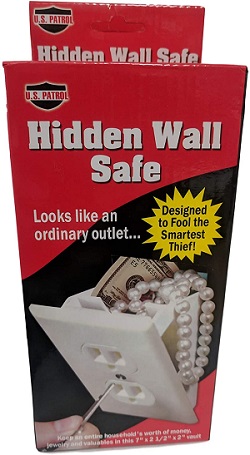
20. Homemade candle. I like this one for more permanent storage, because it takes as much effort to get it out as it does to put it in. In a glass container or other mold, pour in melted paraffin wax (melted on a double boiler) halfway through. Put in your stash (placed in a compact plastic bag), pour in the remaining melted wax and let it cool.
21. Fake electrical socket. You can purchase a socket box, socket, and faceplate at the local hardware store. Using a keyhole/drywall saw, cut a hole in the drywall. Screw the box to a stud, put in the stash, and cover it up with the faceplate. However, for under $10 you could also just buy a fake outlet that tips forward for easy access.
22. The base of the lamp. Open the base of the lamp, put in the stash, and close the base.
23. Wall clock. Dismantle the back of the clock using a screwdriver, put in the stash, and replace the back of the clock.
24. Hardcover book safe. Open the book and go through a third of the pages. Then, using a utility knife and a ruler, cut a square hollow from the center of the remaining second third of the pages. Remove the cut-out section and glue all the pages together inside the square cavity. Let the pages dry out and tape your stash inside. You can also buy a locking book safe for under $20 that looks like a dictionary.
25. Mirrors. Create a hole behind a full-length mirror on a similar mirror then mount the mirror on sliding tabs. For a more extensive mirror hiding spot, you can buy a hinged mirror that opens to reveal your weapons and other goods.
Where to Hide Mid-Sized Valuables
Now lets say you have something bigger than cash or jewelry you want to hide. Alternatively, maybe you have many smaller items that you want to hide in one location. These are options for you.
26. Large bag of dry dog food. Take out all the contents, put the stash on the bottom of the bag then pour the content back in.
27. Insulation. With your gloves on, peel back the flaps of insulation, tape in the stash, and replace the paper flap. Naturally, this will only work for exposed insulation, but you could hide a lot of items under the insulation of an attic.
28. Yard waste containers. The large plastic barrels you keep in the yard would be an excellent spot to hide your stash in since thieves and burglars are more concerned with scouring the areas inside your home. Simply put in the stash inside a heavy plastic bag, put in some silica desiccant packs to prevent moisture, and seal it with duct tape. One of the best advantages to this is you get your valuables outside of the house. If you experienced a house fire, your valuables would still be safe.
29. Hollow core door. Doors of this type are not uncommon to find in some bedrooms or bedroom closets. If you are not sure, just tap on the door with your knuckles. If it sounds hollow, it most likely is. Cut a slot at the top, put in the goods, and then fill the slot with wood putty.
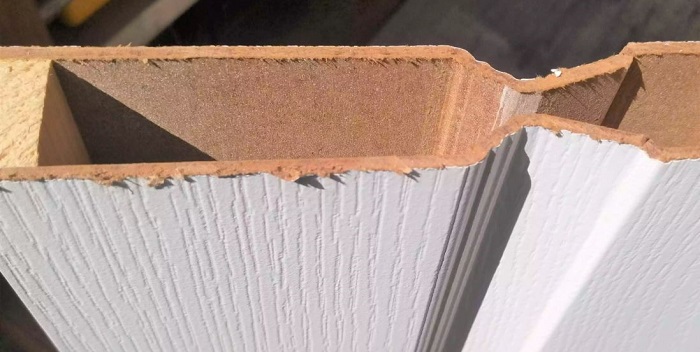
30. Spare tire. Deflate the (preferably old and unused) tire, stuff in the goods, inflate it once again, then put the tire away. Like the yard waste container, you have the advantage of getting the valuables out of the home but still on your property.
31. Fake air conditioner. Install an old, unused air conditioner in the window, take off the faceplate, pull the internal unit out, and discard. You may then place the stash in the empty shell and replace the faceplate with buttons and knobs intact.
32. Baseboards. Pull up the baseboard at the bottom of a wall, then cut the drywall so it is just below the top of the baseboard, and empty out an area between the studs. Put your stash in the wall and tack back the board back in place. This works best on interior walls where there is no insulation.
Where to Hide Large Valuables
Now we are at the larger items section. These are places where you can hide things like stacks of freeze-dried food, long guns, and similar-sized items.
33. Mattress, box spring, or zippered cushions. Never hide anything under a mattress. Hide it in the mattress. Carefully slice an opening in the mattress or box-spring fabric, place the stash in the cavity, then carefully resew the opening. With the cushion, just unzip the zipper, throw in the stash, and re-zip it. Place it somewhere you would normally expect it to be like an antique sofa in the study room.
34. Walls. Make an opening behind solid, fixed items such as coat racks, boards, etc. and place the stash in it before you put the cover back.
35. Old car. This can be considered overkill, but there are clear advantages to this one, particularly if you want to hide a massive stash of goods. You can buy an old beat-up car, place it on blocks in your garage, workshop, or even outside. You can hide different kinds of stuff in in many places within the vehicle. No one who is in a hurry to run off with stolen goods would think to check it out.

36. Fake air intake. With a keyhole saw or a router, slice a hole into the sheetrock of the wall. Put in a metal box and screw it to a stud, then put in the stash, and cover the box with a faceplate.
37. Fake ductwork/plumbing/stovepipe. You can get plumbing stock from the hardware store or right online. Install it going across the basement or inspect for existing connections and add sealed dummies to them. No one will figure it out and you will be able to store large quantities of goods.
38. Acoustic tile ceiling. For those with acoustic tiles ceilings in their homes, simply remove a tile or two, hide the stash, and replace the tiles, making sure that there are not any openings left in plain sight. Easy peasy!
39. Fake beams. If you have not noticed, the ceiling and walls can have hollowed out beams. And while this may take a lot of work, this process is safe from everything except for a house fire – most likely. You could store many long guns in thick, fake beam stretching across a room.
40. Fake water heater or washing machine. If you have an old non-working water heater or washer, you can put in dummy pipes into the plumbing, and then place the stash safely inside. You could even use one of these as a safe spot for a child to hide!
What You Need to Know About Underground Caching
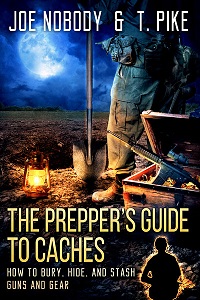
Underground caching has been used to hide valuables for a very long time. Place the stash in 4″-8″ diameter PVC water pipes. For this method, you need the following: a PVC pipe, an end cap, a screw-top end, PVC pipe cement, Teflon sealing tape, and a hacksaw.
First, using a hacksaw, slice the pipe down to the right size. Next, prepare the surface on the end of the pipe with steel wool. Put some PVC cement and stick the end cap on one end. Do the same to the other end with the screw top end. Let the cement dry out and set for 24 hours. Remove the moisture by turning the oven to its lowest temperature (VERY IMPORTANT as PVC is made of plastic) for 15 minutes and remove the pipe.
Next, prepare the stash by placing it inside a sealed, durable bag with 2 oz. of desiccant (such as silica gel) in a pouch or sock. If the stash is metal, wrap it in cheesecloth, let it sit overnight in a dry oven at 250 degrees. Apply a coat of oil to the stash, wrap it in aluminum foil or wax paper, and then place it inside a Ziplock container with desiccant in a sock/pouch. Put in your stash, place Teflon tape on the threads, and screw the end on.
Bury the pipe (its position must be pointing towards the sky) at least 3 feet deep and then cover in 1.5 feet of dirt. Put apart from the auto scrap yard like an alternator or carburetor in the hole and fill the hole. The idea behind including an auto scrap is for it to act as a decoy for anyone deciding to use a metal detector. Alternatively, you may also bury the goods under an old abandoned car or refrigerator.
If convenience is what you are after, you can just buy a gun burial tube outright. They will save a lot of time.
Secret Hiding Spots Summary
As you can tell by now, there are more than a handful of ways to hide your stash from prying eyes and/or uninvited house guests. The key is to understand the motivations of someone who might have an interest in your goods and to creatively put them away in places where they would require some time to get access to.
However, if it’s still within your budget and if you’re thinking about investing in gold and precious metals – in the long run, the best way to go is to get a safe, have it bolted down to the ground or purchase a private rental storage facility where you can store your wealth or possessions possibly offshore or somewhere people would have the hardest time getting access to.
But if you have just acquired some new precious items and are planning to go away for a short while, all the above hiding spot suggestions can yield the same results which you cannot afford to risk in a short period of time.
For further reading consider:
- Dermody, Matthew (Author)
- English (Publication Language)
- 97 Pages - 09/07/2018 (Publication Date) - CreateSpace Independent Publishing Platform (Publisher)
- Plant, Steve (Author)
- English (Publication Language)
- 40 Pages - 03/17/2015 (Publication Date) - CreateSpace Independent Publishing Platform (Publisher)
What do you think? Are there different (or better) places I did not think of? Let me know in the comments.



11 comments
all very good info and very practical only now bad guys will know where to look for stuff
Time is key for regular thieves. Must have a security system, if not put a sign in the yard that says ‘free stuff’.
Seeing more multiple invaders, violent, not in as much a hurry, if home or caught off guard in driveway etc they will torture you,
family. Sad that safe deposit boxes are very hard to get, bank closed away.
Valuable papers copied and with a family or friend in a envelope out of the area protects against fire,
flood. Protecting hand held quality lawn equipment, generators, utility trailers is a big deal here, rural area, much of it pawned, or taken out of state.
Time is certainly key. Thieves are nervous and want to get in and get out (usually).
Much good info. A couple additions – for coins, you can use a D-cell flashlight body as your outer shell, and put in the quantity of coins to approximate the battery weight. Also, a ratty, nasty, dirty old upright vacuum cleaner (like a Hoover) in a corner with other stuff piled on top. Remove the motor and fill the innard area with your stuff – up to about a similar weight.
That’s a good idea, too.
Make sure that you have list of where you hide everything, so if something happens to you, your heirs will know where to look if or you forgot where you put everything and you have to leave your place.
Good advice, Rose!
If you have an indoor cat buy 2 plastic tubs for the cat box place cash in a plastic bag in one tub place the other tub on top of the first one and fill with cat litter most people / thieves will not check a used cat box
Put valuables in a waterproof bag/container, put them in the bottom of a compost pot (marked “compost”) , cover with sand, then scraps (not appealing to animals), add some bricks and/or metal mesh, then put it outside near your house…where it will not get rained or snowed on.
A solid idea. Bonus that it’s also “fireproof” in that if your house were to burn down, the valuable are still safe.
Great article! The creative and detailed list of hiding spots is incredibly helpful for anyone looking to protect their valuables. I especially appreciate the focus on understanding a thief’s mindset to stay one step ahead. It’s a must-read for anyone serious about securing their precious metals, cash, and preps.